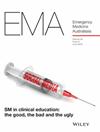Although guidelines recommend angiography and coronary intervention occur within 24 h of thrombolysis when percutaneous coronary intervention (PCI) is not available within 120 min, this target is difficult to achieve in rural and remote areas of New South Wales (NSW), Australia.
In this is secondary analysis we examine the impact of extending the existing 90-min road transport limit for patients in rural and remote areas of western NSW who have received initial treatment for ST-elevation myocardial infarction.
The patient cohort consisted of 86 patients who were transported by road ambulance with transport times more than 90 min. Adverse events occurred in 20% of patient transports and rates were similar in patients transported directly from the scene or from a community hospital. The most common adverse events were hypotension and bradycardia. There was one cardiac arrest, four minor bleeding events and no major bleeding events. The main treatments provided were morphine analgesia, nitrates and anti-emetic medications.
The primary study showed a significant reduction in time from first clinical contact to arrival at the PCI hospital. In this secondary analysis, we demonstrate that the rate of adverse events during long-distance road transport is low, the adverse events are mostly minor in nature and are within the scope of paramedic practice to manage.



